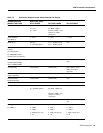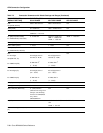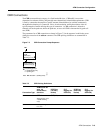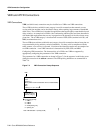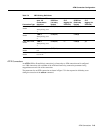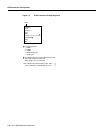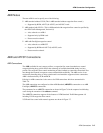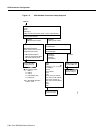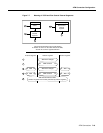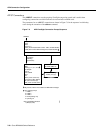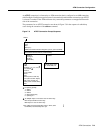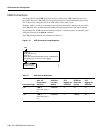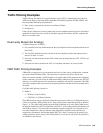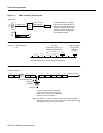
ATM Connections 7-17
ATM Connection Configuration
ABR Notes
The term ABR is used to specify one of the following:
• ABR standard without VSVD (This is ABR standard without congestion flow control.)
— Supported by BXM, ASI-T3 (& ASI-E3), and ASI OC3 cards.
• ABR standard with VSVD. (This is ABR standard with congestion flow control as specified by
the ATM Traffic Management, Version 4.0)
— Also, referred to as ABR.1
— Supported only by BXM cards
— Feature must be ordered.
• ABR with ForeSight congestion control
— Also, referred to as ABR.FST
— Supported by BXM and ASI-T3 (& ASI-E3) cards
— Feature must be ordered.
ABR and ATFST Connections
ABR Connections
The ABR (available bit rate) category utilizes a congestion flow control mechanism to control
congestion during busy periods and to take advantage of available bandwidth during less busy
periods. The congestion flow control mechanism provides feedback to control the connections flow
rate through the network in response to network bandwidth availability. The ABR service is not
restricted by bounding delay or delay variation and is not intended to support real-time connections.
ABR is characterized by: PCR and MCR.
Policing for ABR connections is the same as for VBR connections which are summarized in
Table 7-6.
The ABR connections are configured as either ABR Standard (ABRSTD) connections or as ABR
ForeSight (ABRFST) connections.
The parameters for an ABRSTD connection are shown in Figure 7-6 in the sequence in which they
occur during the execution of the addcon command.
The ABRSTD connection supports all the features of ATM Standards Traffic Management 4.0
including VSVD congestion flow control.
VSVD and flow control with external segments are shown in Figure 7-7.



